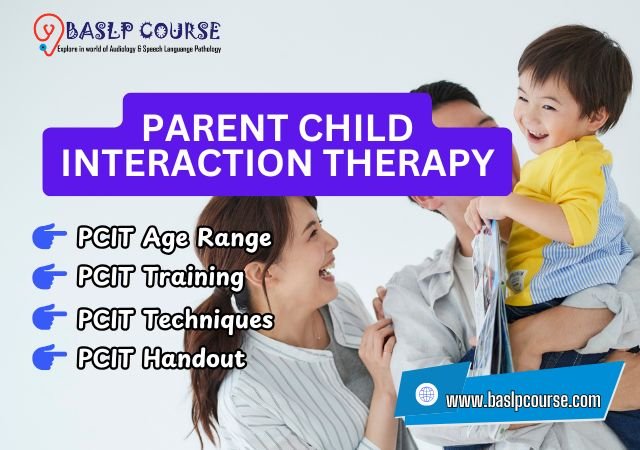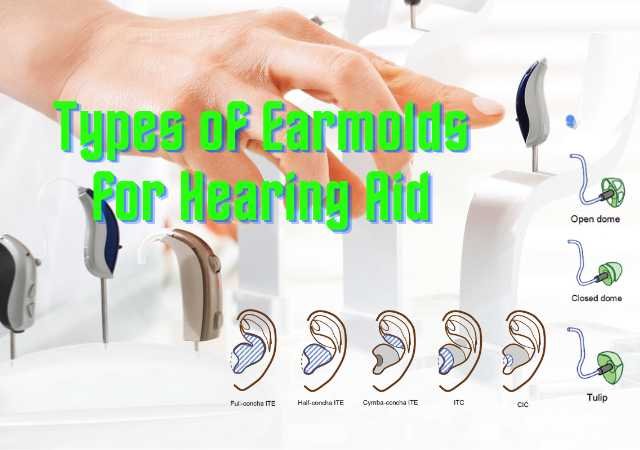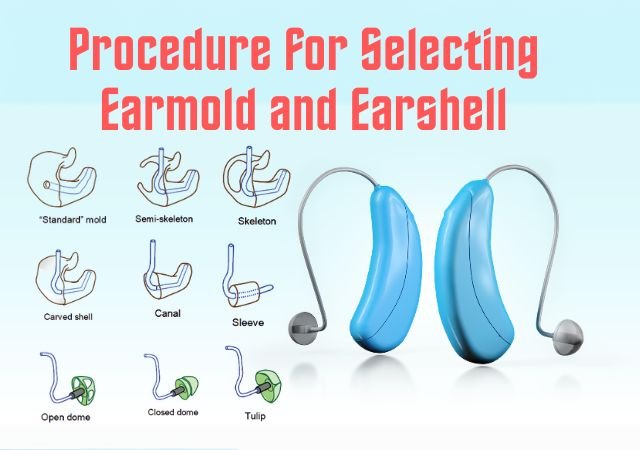Speech and Language Stimulation Techniques and Terminologies: Speech therapists employ a range of techniques to stimulate speech and language development. There are numerous speech and language techniques and terminologies. Speech and Language Stimulation techniques are just a few examples of the many approaches used in speech and language therapy to stimulate and support communication skills in individuals of all ages. Each technique is tailored to the specific needs and goals of the individual, ensuring a personalized and effective intervention.
Speech and Language Stimulation Techniques
These are some Speech and Language Stimulation Techniques and Terminologies are described with illustrations:
- Echoing
- Verbal Imitation
- Modeling
- Discriminative Modelling
- Demonstration Actions
- Commands
- Dinary Choices
- Expansion
- Semantic Cueing
- Prompting
- Shapping
- Fading
- Sentence Completion
- Error Identifications
- Questions
- Sentence Rearrangement
- Story Telling
- Categorizing
ECHOING
This method involves the adult repeating the child’s words back to him. The adult may substitute a child’s unclear word with a “wh” word like “what” or “where,” or he may repeat the child’s statement with a rising inflection, as if to challenge it. The youngster need not always react at all while using this strategy. However, it states that he lets the youngster know some of what he says and that an adult can understand it. Furthermore, it let the child know which portion of his response was unclear, allowing him to concentrate on that portion rather than having the rest of it repeated.
ILLUSTRATION:
Child: He got two images (unintelligible)
Mother: you got two what?
Child: Magus
Mother: Mangos! Oh! You got two mangos!
Child: Mangoes………. Chweath…….
Mother: Mangoes are what?
Child: Chweath…………Mothers: -Yes, Mangoes are sweet.
VERBAL IMITATION
The child imitates the mother while using this strategy. A child, however, won’t be able to mimic structures that are above his verbal proficiency level. When utilizing this strategy, one should utilize forms that are just a little bit above the child’s current level of functioning because imitation also depends on the child’s memory capacity. The length of the sentence shouldn’t be too long for the child to remember. For the purpose of achieving spontaneous speech output, imitation is helpful. It helps the child understand the new structure they must learn. The youngster could learn where and how the new structure fits into other parts of the sentence that they already understand by imitating this new structure. It also aids in the child’s learning of grammatical principles since it makes the child aware of sentence components that she is not yet aware of.
ILLUSTRATION:
Mother: -will your repeat after me? Today is Friday
Child: Today…….Today
Mother: No, no, say today is Friday
Child: mmm……Today is fee day
Mother: Friday………say……….Friday
MODELLING
This method may be applied either before or following the child’s comment. The mother enlightens the youngster. Despite the fact that her sentence structure is more complex, the mother’s main goal is to provide the child a more complex sentence that will give them a meaningful sentence. The child has more to consider and can therefore comment on what they heard.
This method has two advantages:
- It uses the child’s comments to amplify what they have spoken.
- The sentence structure or grammatical forms of the kid are not corrected or repeated. Therefore, it is not necessary for a young child to develop a form that he might not be able to use appropriately aside from rate imitation, word by word.
There are two types of modeling:
- ANTECEDENT MODELLING TECHNIQUE: The mother provides the example before the child speaks, and then the youngster speaks.
- SUBSEQUENTIAL MODELING TECHNIQUE: The mother does not correct or repeat the child’s remarks after the child has finished speaking.
ILLUSTRATION:
Child: Mummy, Chocolate……mmmmmm
Mother: No, not now dear, we will buy chocolates in the evening
Child: mmmmm….Bikki?
Mother: OK dear, I will get your both chocolates and biscuits in theevening
Child: Evening? Why…mmmm
Mother: Shops are closed now , we will go out for shopping only in the evening
Child: Shopping! Evening!…….oooooooooo
DISCRIMINATIVE MODELLING
Correct and improper responses are successively modeled, with the youngster being asked to imitate the correct form as soon as it is demonstrated. Differentiating between proper and incorrect responses is facilitated by modeling both of them. The improper response is made weaker, while the right form is strengthened.
ILLUSTRATION
Mother: See this picture, tell me, which is correct the girl is running, or the girl is Hopping (show the picture of girl running)
Child: The girl is running
Mother: Good, here is a chocolate for your correct answer
DEMONSTRATION ACTIONS
The method entails physically acting out what is spoken. While the action is being discussed, the student and the teacher actually perform it. This strategy aims to give verbal form to the event itself. A picture cannot give a child the same level of knowledge as an actual physical activity coupled with the language. It immediately includes the youngster as a participant. When used with a young child who can get bored if not physically active and participating in the activity, this technique can be quite helpful. The child, who has very basic language skills, responds favorably to it.
ILLUSTRATION
Mother: Open the door, child, see how I am opening
Child: Opens the door (does the action)
Mother: That’s good, you have opened the door, now, try to choose it along with me.[The child does the action simultaneously as he is being told]
COMMANDS
The sentences that tell someone to do something are known as commands. Commands can be used to improve both knowledge and production abilities. Children at various stages of language acquisition can employ commands, which should range from simple to complicated. When a youngster is taught to obey, it is stated that he will eventually have some influence over his environment by utilizing language as a tool. After being given a command, the child is expected to comprehend the instruction and then demonstrate his comprehension by precisely acting as instructed.
ILLUSTRATION:
Mother: Give me, any one square from the table
Child: Here, square
Mother: -Now, give me a blue and a red square from the table
Child: Here, two squares
Mother: Thank you, can you keep the white square on the blue square and bring it to me?
Child: -(Does the action)
Mother: Yes, Good! Thank you.
DINARY CHOICES
Because the child is difficult to comprehend or uses words that do not make sense together, the parent or the doctor frequently do not understand what the child is trying to express. The child’s range of responses can frequently be limited by the adult, and in this way, the adult is often better able to comprehend the child’s reaction. The adult is reducing the number of alternative responses that the youngster will need to consider by giving him two or more options that are acceptable. It can be used to compare and contrast language concepts with the kid and to stabilize new language forms. The binary choice method aids in the development of syntactic and semantic abilities.
ILLUSTRATION:
Child: Mom…..eat………..
Mother: What do you want to eat? Do you want dosa or idli?
Child: Want dosa
Mother: How many dosas do you want? One or Two?
Child: Two
Pictures can also be presented to the child to elicit responses.
Mother: What is this child doing? Is he riding a tricycle or a car?
Child: Tricycle
Mother: Yes, the child is riding a tricycle. Do you want a toffee or candy?
Child: Candy……………candy…………..
EXPANSION
The process of extending or reformulating a child’s speech into an adult-like form, either grammatically (in terms of sentence structure) or with regard to the meaning, is known as expansion. This method gives the kid better precision, whether it’s grammatically correct or meaningless. The listeners can better understand the youngster as a result. The mother demonstrates to the child how to communicate his specific message more successfully by expanding it into an adult-like form, and she or another adult can also ascertain what the youngster was trying to express. Mothers converse verbally with their children by using this method.
ILLUSTRATION:
Semantic Expression:
Child: Mummy, laus go
Mother: That’s not a leus. That is a car.
Child: mam, green car
Mother: No, see the color, It is ared car
Child: Auto come
Mother: Oh! Auto has come. Let’s go home.
Syntactic expression:
Child: Mummy, chapati
Mother: Say, I want chapati
Child: Mom, I wan….chapati, Daddy eat
Mother: Yes, dady is coming to eat none
Child: Mummy, milk…………..dress
Mother: Oh! No! The milk has spilt over your dress
Child: Dress…..wet…………..
Mother: Yes, Dress has become wet. Come on, let me change the dress for you.
SEMANTIC CUEING
In this method, the mother or another responsible adult provides the child with relevant cues so that he can readily provide the desired or necessary reactions. This method is helpful when the kid has given an unsuitable response or is unable to give one at all. It offers the child the necessary stimuli that could prompt the desired responses. The child can use it to recollect or retrieve a cue that is forced upon him to express on his own. New words or concepts can be established with it. It is possible to connect fresh knowledge with what the youngster already understands. Instead of just giving him the precise response needed, it encourages the child to perform some processing to come up with a response.
ILLUSTRATION:
Mother: -what is this?
Child: -I don’t know
Mother: -It is something with which you clean your teeth early in the morning
Child: -Bush
Mother: -Yes, that is a toothbrush.
PROMPTING
Prompts are special stimuli that increase the probability of working responses. The likelihood of effective responses is increased by prompts, which are unique stimuli. Indicators of daily living are like prompts. When someone asks a question and doesn’t immediately get an answer, they provide another stimulus. Although the youngster is still hesitant, this stimulus might elicit a response from them. Prompting the child increases their likelihood of responding. Part of the response to a prompt corresponds to the targeted desired response. Different motor behaviors and gestures are examples of nonverbal cues that imply to a young kid the desired target behavior.
ILLUSTRATION:
Mother: What is this picture about?
Child :(Quietly sees the picture)
Mother: A child is doing something with the ball
Child: He is playing
Mother: Yes, the child is playing with a ball. What are you doing?
Child: See pictures
other: Yes, you are seeing the pictures.
SHAPPING
Complex target behaviors must be made simpler so that the youngster can readily learn them step by step. To create the finished complex, the parts are assembled in a set order.
ILLUSTRATION:
[Mother has a chocolate. The child sees it and stretches out his hand]
Mother: What do you want?
Child: Ch…..Ch…..Um…………..
Mother: Your want toffee?
Child: ch………ch…….tof…………
Mother: Yes, say toffee
Child: t………..top………..topee
Mother: No say toffee dear
Child: Top………fee……….
Mother: Hm…………once moresay toffee
Child: Toffee
Mother: That’s correct say-mummy, I want toffee
Child: me wan……….top…….fee
Mother: say, I way toffee
Child: I wan-toffee
Mother: WANT-say it once again dear?
Child: I want toffee
Mother: very good darling. Here take this toffee.
FADING
As a technique, it is described as one in which the clinician creates and gradually lessens a particular stimulus control over the target behavior. Even though the same reactions are regularly elicited, the unique stimuli are gradually diminished. The modeled stimulus is gradually reduced until the response is amplified. Initial vocal modeling of the response by the clinician is done at a suitable pitch. The clinician lessens the vocal intensity of modeling with subsequent trials of softer and softer voice until the voice is completely muted when the kid starts to imitate the reaction consistently. Both the manual instructions and any accompanying images can be dimmed.
ILLUSTRATION:
Mother: -What is this dear? It is something, which you eat and green in colour
Child:-(Pause) ……..um………………Apple
Mother: -See this picture. It is green in color and tastes sweet, you can see this in Buncher.
Child: -Guava………….no……………..grapes
Mother: -Hm…………It is grapes. Say GRAPES
Child: -Gapes………gapes………………sweet
Mother: -Very good. Now you can have this bunch of grapes for yourself
SENTENCE COMPLETION
In this technique an incomplete sentence is presented to the child, and he has to complete the sentence with an appropriate word. It provides as much as little assistance to the child as needed. It can be used to establish a variety of language skills. It is used to elicit a word, inflectional ending or a phrase. As the child advances, this technique enables the clinician to reduce the number of stimuli needs to elicit a response and allow for a variety of responses to be acceptable. A variation of this technique is to have the child begin a sentence with the structures which he is learning and then allow the clinician to finish the sentence. This presents information in a structured way to the child. It can be used across all levels of language complexity, from the one-word response level through more elaborate or advanced mufti-word response levels.
ILLUSTRATION:
Clinician: -The boys are playing…………..
Child: -Foot ball
Clinician: -The girls are playing…………
Child: -Kho-Kho
Clinician: -What are these olf people doing? Sitting on a…………
Child: -The…….bench, me sit………mmmm……I………..sit
Clinician: -Say, I will sit on the……………
Child: -Chair
Clinician:-O.K let’s sit on the chair.
ERROR IDENTIFICATION
In this method, two sentences of any linguistic structure are delivered to the youngster. Scientific and grammatical flaws are placed into the sentences, and the child must repair them. He must first identify the error in the statement and then present a more proper form based on his knowledge. While syntactic correction concentrates on the sentence’s grammatical structure, semantic correction focuses on the sentence’s meaning. A youngster might not always be able to create sentences correctly or accurately, but he or she may have some understanding of what makes a sentence acceptable or unsuitable.
Even though the child may not be entirely proficient, they do provide the clinician with some information about the child’s knowledge of the language, including what he already knows and what he still needs to learn. This method can help a child who has recently learned a new language become more stable. This method gives the youngster a way to hone his understanding of how to adopt the newly learned form once they have learned what the language form is and when to utilize it. The youngster would be asked to point out instances of proper and improper usage of the form, enhancing his understanding of the rules.
ILLUSTRATION:
Clinician: -In this sentence, right? -“I god to the shop everyday”
Child: -No
Clinician:-O.K that’s fine. Try to correct this sentence
Child:-I went to the shop
Clinician: -Yes, good.
QUESTIONS
It is among the best ways to get a response from someone. There are three different categories of questions:
- Questions that require a yes-or-no answer: -For instance: Did you eat breakfast?
- Questions that call for a naming response. For instance:
- Open-ended question that requires an answer. For instance: Where did you go last night? The open-ended inquiry is typically the most successful in eliciting a language sample from the youngster since it necessitates greater language use than yes-or-no questions and requires a one-word naming response.
The difference between a yes-or-no question and a naming kind of question is that the open-ended question gives the child more options for responses, but the yes-or-no question or naming type of question only allows for one specific response. This is obviously beneficial for the child who has difficulty expressing himself. A youngster is more likely to react successfully to an open-ended inquiry since it offers them the option to provide a number of suitable solutions.
ILLUSTRATION
Clinician: When did you go to your uncle’s house?
Child: YesterdayClinician:-How did you go?
Child: By bus
Clinician: Why did you go to your uncle’s house?
Child: See Uncle
Clinician: What did you do there?
Child: Play games and ate biscuits.
Clinician: Who all are there in your uncle’s house?
Child: Uncle, Aunty, Rohit……………..
SENTENCE REARRANGEMENT
By using this method, the child is better able to arrange his words into coherent sentences. When a youngster is able to label people, things, and activities with one or two word utterances, it might be helpful. The youngster can more easily understand the placement of these words in a phrase using this strategy. The goal of a language-learning program should be to help children make connections between linguistic constructions and experiential categories, as well as to support them in refining their original assumptions when they are wrong.
By examining connections between these words and categories of experiences, this strategy offers the youngster with the words with which to construct his own phrase. By examining connections between these words and categories of experiences, this strategy offers the youngster with the words with which to construct his own phrase. This method is relevant to the creation of early sentences of 2-3 words. Secondly, It enhance language skills at many different levels.
ILLUSTRATION:
Clinician: What do you see in this picture dear?
Child: Dog, girl
Clinician: Read the following words; can you arrange them to describe this picture? (‘dog’, ‘pet’, ‘girl’)
Child: The dog pet the girl
Clinician: No No! The dog does not pet the girl. What does the girl do?
Child: The girl is petting the dog
Clinician: Yes, that’s good
STORYTELLING
The youngster can benefit from it by learning how to organize thoughts, remember knowledge, and use specific words, inflectional ends, and sentence structures. It functions as a kind of organized conversational communication. The youngster is given a story, after which questions are posed. Depending on the child’s abilities, these questions should either need a yes-or-no response, a naming, or an open-ended response. Using a collection of images placed in a specific order, the youngster is supposed to conjure up a tale on his or her own. The young patient may have inquiries for the therapist regarding the tale. This method can be used to assess the child’s syntactic and semantic proficiency as well as to help them build their production and comprehension skills. New linguistic forms are stabilized using it as well.
ILLUSTRATION:
[The story of the “Thirsty Crow” is narrated to the child]
Mother: Did you understand the story dear?
Child: yes mama
Mother: What did the crow see?
Child: Water!
Mother: Where was the water?
Child: In the jeg.
Mother: Why could the crow not reach the water?
Child: Water…….nmmmmm……below………
Mother: what did the crow do then?
Child: put pebbles
Mother: What happened to the water then?
Child: Water…….mmmmmm………..up……….
Mother: yes, Then the crow drank water.
Child: The crow was happy mummy
Mother: Yes, The crow was happy after drinking water. Where did the crow go?
Child: on tree
Mother: Yes. The crow flow away and sat on the tree.
CATEGORIZING
It is helpful in teaching children the relationships between words. Using this strategy helps them understand how words fit together to form sentences. Additionally, it helps the child recognize words in ways that make conceptual sense. The youngster has a better chance of understanding a statement if you label words as “Doers,” “Recipients,” or “Actions.” You can master the many grammatical constructions, such as indirect and direct sentences, active and positive statements. A youngster is more likely to understand and construct coherent sentences if he or she can classify words and lay out their functions.
This method directs the child’s attention to how various word class’s function. In a structurally complex phase of language development, it therefore trains the child to combine words into meaningful relationships.
ILLUSTRATION:
[Mother shows pictures of apple, mango, ice cream, flower, key and clock]
Mother: -Can you see these pictures? Now can you name the things that the cannot eat?
Child: -Flower, key, clock…………..
Mother: -Those that you can eat?
Child: -Ice-Cream, Mango and apple…………..
Mother: -Yes, Fine, you know these words like eating drinking , sleeping….Tell you about actions can you tell me a few more?
Child: -Ah! Bathing, jumping, hopping, running………….
Mother: -Very good.
References:
- Treatment Resource Manual for speech-language pathology 5th edition Froma P. Roth, colleen K. wor [Book]
- Clinical Methods and Practicum in Speech-Language Pathology M. N. Hegde, Ph. D.Deborah Davis, M.A [Book]
- Assessment in Speech Language Pathology A Resource Manual 5th Edition, Kenneth G. Shipley, Julie G. McAfee [Book]
- Introduction to communication sciences and disorders – Gary Weismer, David K. Brown [Book]
- The Speech-Language Pathology Treatment Planner – Keith Landis [Book]
You are reading about:
Speech and Language Stimulation Techniques and Terminologies







0 Comments